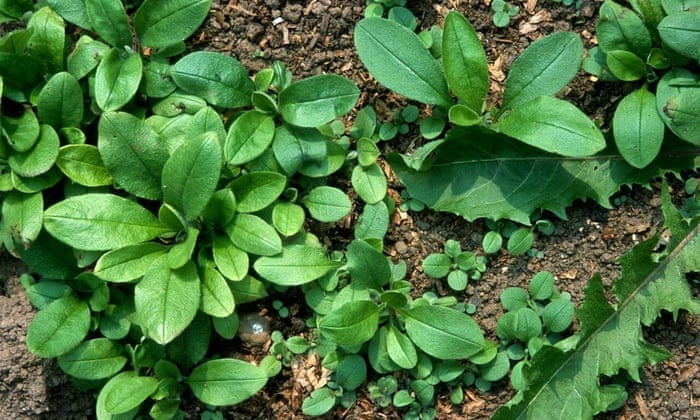Let weeds do their job. They will heal and nourish our bare soil this autumn and winter

Bare, exposed soil isn’t part of nature’s master plan. How many examples can you think of where soil is naturally found bare and with no plants at all growing in it? Good examples are beneath freshly uprooted trees, landslips, or where the ground has been charred following a heathland fire. In these situations bare soil isn’t bare for long; within days seedlings begin to appear and cover the ground with a miniature green forest. In a few months’ time the scar is barely noticeable. A year later you would never know it had been there at all.
Contrast these natural examples of bare soil with those created by man: ploughed fields and freshly dug gardens and allotments are obvious examples. But, left to nature, even these vast expanses of bare soil soon turn green with a multitude of tiny seedlings. Think of those wild, overgrown allotments or that jungle-like abandoned garden – these too were once bare earth. In fields, gardens and allotments, on lawns, roadside verges and sports fields, along streets and on paths and pavements, we are constantly battling to stop weeds from growing. All we are doing is keeping the healing powers of nature at bay.
Weeds act like a kind of living “plaster” whenever soil is exposed, either by natural or artificial causes. As far as nature goes, bare soil is out. When soil is exposed to sunlight it’s not only the earthworms that quickly burrow back into the darkness. Millions of microscopic soil organisms are also exposed to the potentially harmful rays of the sun, so the sooner plant growth covers the soil over again, the better. Once you appreciate this perfectly natural reaction by nature, you start to see that weeds aren’t there to deliberately frustrate our gardening efforts; they are simply doing their job. Just as new skin forms after we’ve caught ourselves on a rose thorn, weeds help heal wounds in the earth. Look at it another way: it’s us who are causing the problem by insisting on bare, neat-looking soil – open wounds, if you like.
Left to their own devices, weeds also help to improve the fertility of the soil. They do this in several ways. Their roots bind the soil together, helping to improve its structure and create a more stable environment in which soil life can flourish. Those weeds with a deep taproot, such as curled dock, draw up plant nutrients from deeper in the ground, making them available to plants growing near the soil surface. Above ground, the stems of weeds help trap fallen leaves and other organic matter, which break down into the soil or are dragged underground by earthworms. And when the weeds themselves finally die – after weeks, months or years depending on the type of weed and its life cycle – both the leafy tops and the roots decompose into valuable humus.
Read more here.


















